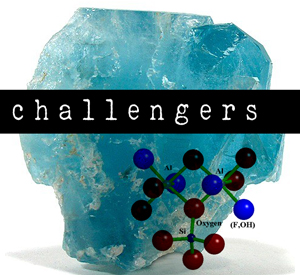
c h a l l e n g e r s
Who can challenge the corundums and diamonds in toughness and beauty? Topaz has a Moh's hardness
of 8 and zircon is one of the few stones with brilliancy like diamond. Both gemstones are
members of the nesosilicates group, which include peridot and garnet. Silica tetrahedra tend to be
isolated within other elements. Zircon is zirconium silicate (ZrSiO4) and topaz is aluminum silicate
fluoride hydroxide (Al2SiO4(FOH)2). Zircon exhibits double refraction (different light bending properties
depending on axis; items seen through a prism will appear double), and it is one of the tests to
help distinguish it from diamond, which has a uniformly high index of refraction. It is also softer
than diamond, with Moh's hardness of 7.5. Topaz has a moderate refractive index, sufficient to bend light
through a prism, and colorless topaz can also be mistaken for diamond when brilliant cut. Blue topaz
resembles aquamarine, but sherry topaz or imperial topaz is unrivaled in warm golden color.
Gemstones grouped here:
topaz,
zircon.
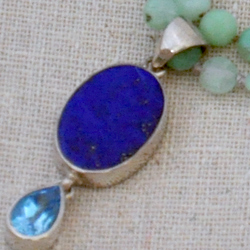
Hatshepsut
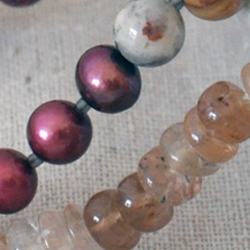
Imperial Topaz

Eunomia
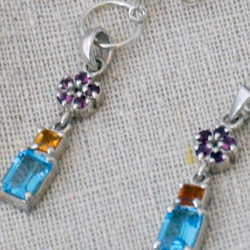
Tribute
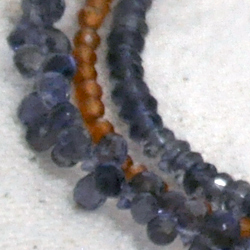
Ma'at
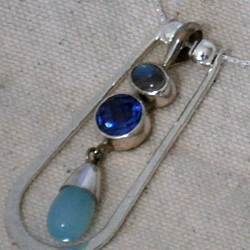
Horseshoe
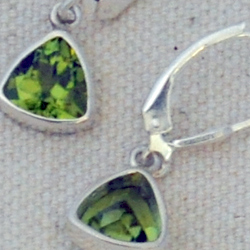
Spring Fling
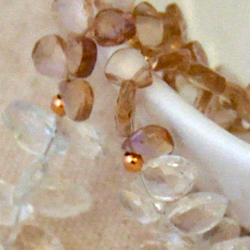
Sparkling Wine
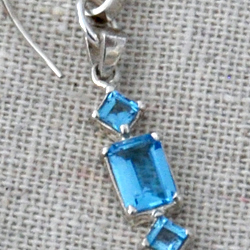
December

Rock

Waterfall
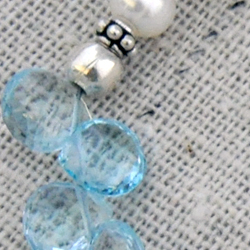
Blue Delight
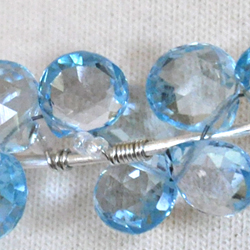
Trapeze
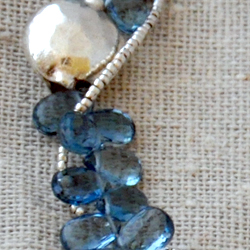
Fish Out of Water
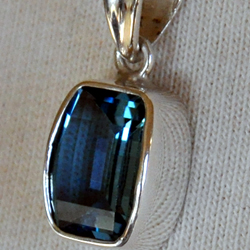
Penelope
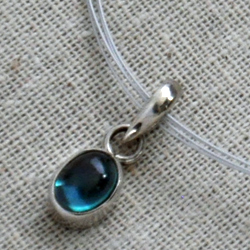
Four Feet

September
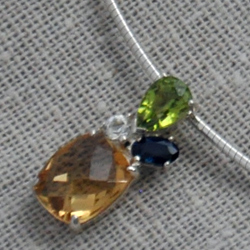
Bartlett
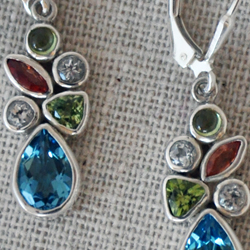
Early Spring
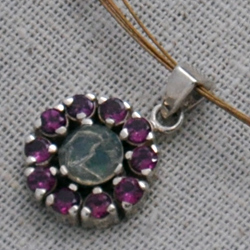
Modern Fairytale
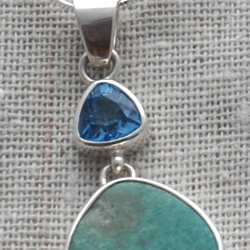
Naiad
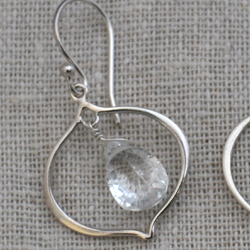
Isadora
Topaz is thought to first originate from the legendary island of Topazios, off the coast of Egypt
now known as Zebirget. Topaz occurs in a variety of colors, with natural sherry topaz and pink
topaz being the most valuable. Most pink topaz on the market is yellow topaz that has been
heat treated. Deep blue topaz - often called London topaz - has been irradiated. Both effects are
permanent and deemed harmless. (There was a question about lingering radiation, but this has not been
supported by testing.) Russia, Brazil and Nigeria are major sources of topaz, but it is found across the globe.
Topaz is formed by fluorite bearing vapors given off in the last stages of crystallization in various
igneous rocks, including rhyolite and pegmatite dikes.
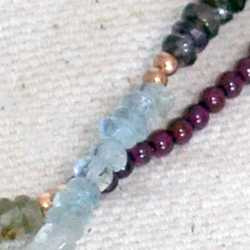
Mary Bennet

Crown Imperial

Subterranean
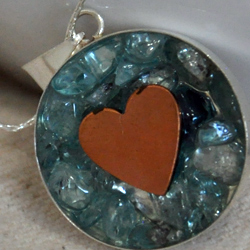
Love, Cool Love

Thin Ice
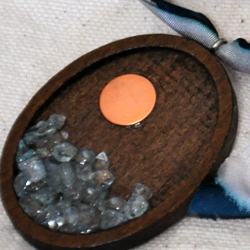
Winter Cabin
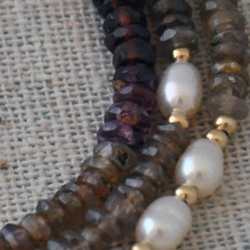
Zircon No. 5 Countess Olenska
Zircon takes its name from the Arabic zargun, meaning "gold color". It's been mined for
over 2000 years in the alluvial gem deposits in Sri Lanka and used as a gemstone in Greece and Italy.
It's found in a variety of colors: colorless, red, golden yellow, green and blue. Heat-treating brown
zircon into blue-zircon has been practiced for centuries; stones were placed in clay pots with fine
sand and heated in the coals of a campfire. Blue zircon reheated becomes golden yellow and may be
the source of the ancient name.

